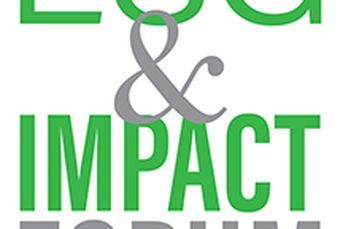It’s time to personalize retirement income
Learn from behavioral finance expert Shlomo Benartzi about why advisers should develop customized strategies
https://www.investmentnews.com/wp-content/uploads/assets/graphics src=”/wp-content/uploads2017/12/CI1136461219.JPG”
Studying — rather than assuming — how people actually behave when saving for retirement, behavioral finance expert Shlomo Benartzi has come up with insights and practical programs that have improved the lives of countless people.
One of his programs — Save More Tomorrow — is based on the insight that people want to increase retirement savings, but procrastinate about changing their retirement plan contributions because they don’t want to cut current take-home pay. The program, developed in 1996 with Nobel Prize-winning economist Richard H. Thaler, allows retirement plan participants to agree to save more when they get raises and to contribute even greater percentages with future raises. Many sponsors of defined contribution plans have adopted Save More Tomorrow, and about 15 million people now take part.
Speaking at IMPACT, Professor Benartzi of the UCLA Anderson School of Management and co-founder of its Behavioral Decision-Making Group, explained a new effort using insights gleaned from behavioral economics. He calls it personalized finance, and he suggests that personalizing the accumulation and decumulation phases of retirement could become the chief role of financial advisers as investment management becomes increasingly commoditized.
“The idea that we do retirement the same way for everyone doesn’t make sense anymore,” he said, referring not just to defined contribution retirement plans, but also to the way advisers typically use simplistic risk-tolerance assessment tools to create essentially similar plans for their clients.
“We should be taking the behavioral insights we have learned and the personalization tools now available and do in financial services what Netflix and Amazon have done in other areas,” he said.
Institutionally, he noted, a degree of personalization is currently available through target-date funds. By why not offer different default savings rates, for example?
“The default savings rate is critical because a lot of people don’t change it,” Professor Benartzi said. “But even if they do, people change jobs, and when that happens they go back to the lower rate. We should start at a higher rate and escalate faster so people save at a higher rate more of the time.”
For plan sponsors, the difficult task is setting a default rate that is high enough to improve savings but not so high as to have participants drop out of the plan. Professor Benartzi said that an experiment he ran with Voya yielded some interesting results.
“At default rates of seven, eight, nine and 10%, we found that people don’t run away. In fact, they are more engaged. At 11%, some run away. None of us predicted that result. We thought people would run away or blindly accept savings rates that are too high and then pile up credit card debt,” he said.
Personalized, digital nudges to encourage greater savings also work. Pointing to a study in which every dollar spent by a plan sponsor on email reminders resulted in $1,600 in additional savings, Professor Benartzi noted that four of 10 people cash out their 401(k) plan when they change jobs.
“Imagine at that point they get a personalized email showing the check they didn’t have to write to the IRS if they rolled over their plan? We could provide better information at the right time to move the needle,” he said.
For advisers, greater personalization should come through understanding client differences in the areas of loss aversion, present bias and hedonomics, or one’s approach to pleasure.
Often conflated with risk tolerance, loss aversion can vary widely, with small losses being very painful to some people, Professor Benartzi said, noting that advisers must better understand their clients’ loss aversion bias when creating plans and presenting investment options.
Also important is understanding present bias, or the tendency of people to give stronger weight to payoffs closer to the present when considering trade-offs between two future moments. People with a very strong present bias tend to save too little and retire too early, he said. Taking differences in present bias into account could result in designing retirement income plans that offer more attractive outcomes to those willing to defer taking benefits or withdrawing funds early.
Finally, advisers should be able to determine the path of retirement income based on their clients’ personal approach to happiness and satisfaction.
“For example, you could create a plan to provide someone with the same income every month, or a plan that increases monthly income over time, or one that starts higher but gets lower,” Professor Benartzi said. “Or maybe it’s plan — or an annuity — that pays a little less every month but gives you a ‘bonus’ payment once a year.”
He said that using the standard 70-80% replacement rule for retirement income may work for some clients, but not for those who find it difficult to cut spending. For such clients, saving more while working, retiring later, or doing both, can provide an alternative, and doing a stress test would show how clients would react to each of those changes.
“We’re at the beginning stage of the retirement industry starting to focus on personalization,” Professor Benartzi said. “It will become the adviser’s job to help clients manage more choices in accumulation and decumulation, and to help them understand the implications of those choices.”
Learn more about reprints and licensing for this article.






